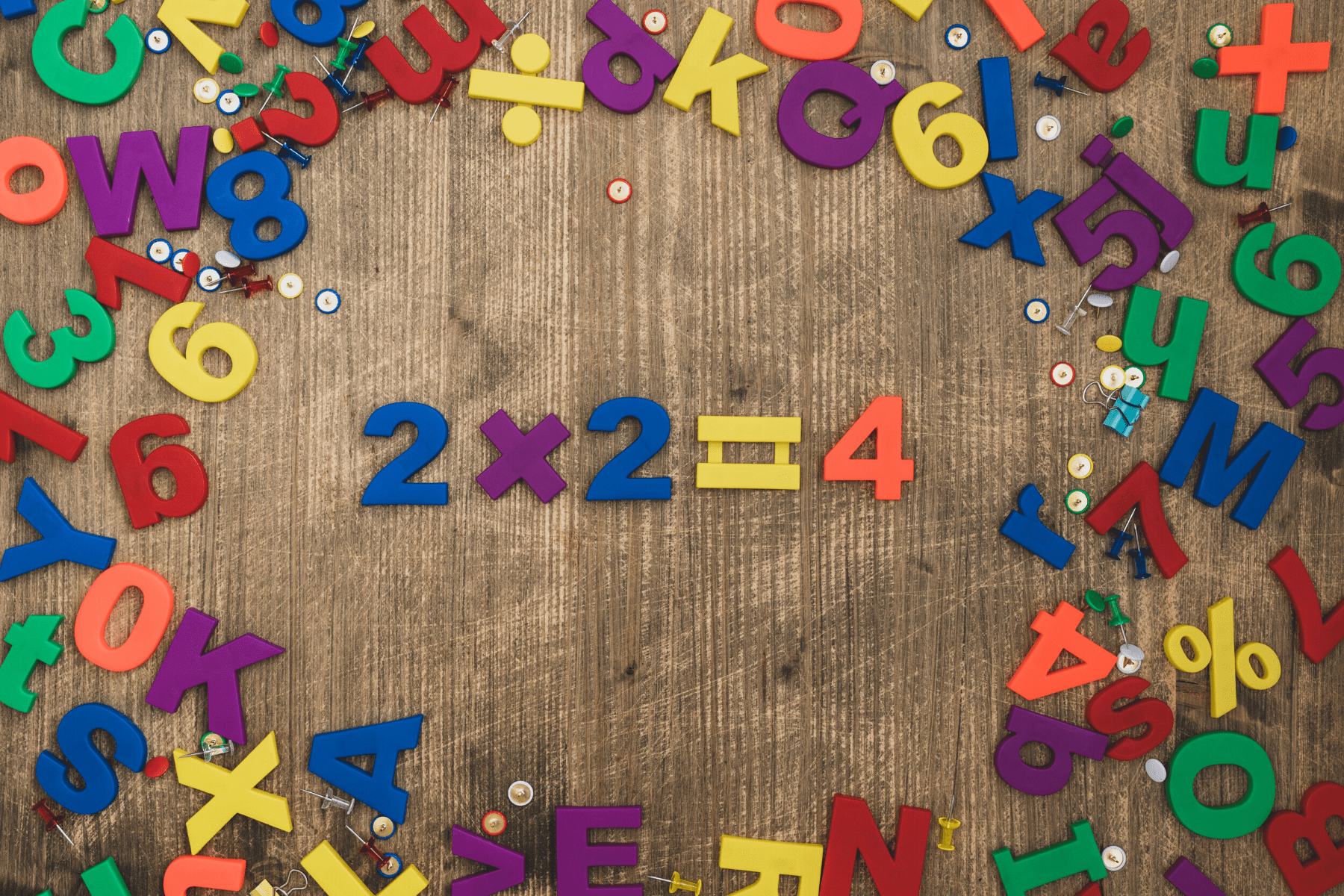Learning math and basic skills starts the very second kids start to explore the world. Whether it’s coloring, identifying shapes, exploring patterns, or counting, each skill builds up their foundation.
Children learn math at certain ages in sequences and milestones. Kids may not yet have all the skills listed for their age group, and that is perfectly fine! All kids learn their math and basic skills at different rates.
We have listed the typical math and basic skill development for kiddos as they get older.
Math Skills To Expect By Age
Babies (Ages 0 – 12 months)
- Start to predict the sequence of events (seeing a bottle means it’s time to eat)
- Begin to understand basic cause and effects (crawling towards something is how to get closer to it)
- Start to classify things in simple ways (certain toys light up with colors and others don’t)
- Begin to understand relative size (parents are big, babies are small)
- Start to understand words that describe quantities (more, bigger, enough)
Toddlers (Ages 1 – 2 years)
- Realize that numbers mean “how many” (using fingers to show how many years old they are)
- Begin reciting numbers, but may skip around with some of them
- Understand words that compare or measure things (hot, warm, cold)
- Basic shape matching (circle to circle, square to square)
- Explore measurements by emptying containers and filling them with items
- Start seeing patterns in daily routines in things like breakfast
Preschoolers (Ages 3 – 4 years)
- Recognize shapes in the real world
- Start sorting things by shape, color, size, and purpose (orange basketballs are for playing, yellow bananas are for eating)
- Compare and contrast using classifications like size, weight, height
- Start to count up to 10 and count items in a group
- Understand numerals and their number names (3 stands for three)
- Begin to put puzzles together using spacial awareness
- Start predicting cause and effect (like what will happen if they spin in circles really fast)
Kindergartners (Age 4 – 5 years)
- Add by counting on fingers. 1, 2, 3, 4, 5 on one hand, and starting with 6 on the second hand
- Identify the larger of two numbers and accurately recognize numerals up to 20
- Draw and copy symmetrical shapes
- Start using very basic maps to find a “a prize or hidden treasure”
- Begin to understand basic time concepts, like weeks, months, and days of the week
- Follow multi-step directions that use words like first and next
- Understand the meaning of words like mostly and large
First and Second Graders (Age 6 – 8 years)
- Predicting what comes next in a patterns and knowing what the pattern is
- Know the difference between two and three dimensional shapes and name the basic ones (cones, cubes, cylinders)
- Accurately know basic addition and subtraction up to 20
- Begin counting to 100 by ones, twos, fives, and tens
- Write and recognize numerals 0 to 100, and the words for numbers one to twenty
- Recognize the value of coins and currency
Third Graders (Age 8 – 9 years)
- Move from using hands-on methods to solely being able to solve math problems with pencil and paper
- Know addition and subtraction using currency such as coins (2 quarters – 1 dime = 40 cents)
- Do addition and subtraction with regrouping (also known as borrowing)
- Understand place value enough to solve problems with decimal points
- Begin to do multiplication and division, with help from fact families (collections of related math facts, like 2 × 4 = 8 and 2 × 5 = 10)
- Create a number sentence or equation from a word problem
Fourth and Fifth Graders (Age 9 – 11 years)
- Start applying math concepts to the real world (making half of a cookie recipe means using half the ingredients)
- Practice using more than one way to solve problems
- Write fractions and decimals and put them in order on a number line
- Compare and contrast numbers using > (greater than) and < (less than)
- Begin multi digit multiplication (525 × 13)
- Complete long division, with or without remainders
- Accurately estimate and round



Recent Comments